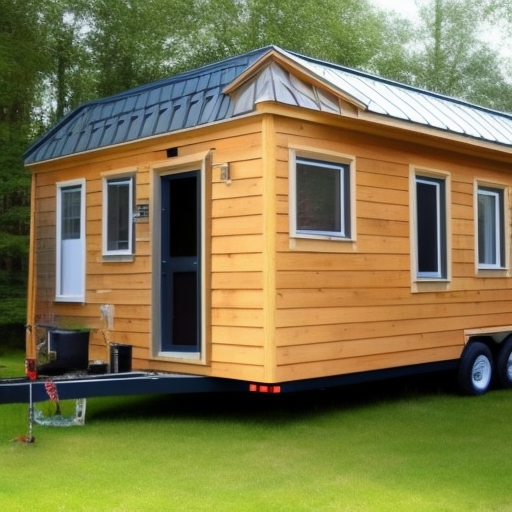Living in a tiny house has become a popular trend in recent years, allowing people to live in a small space but make their own rules when it comes to their home. But the question of “How many rooms can be in a tiny house?” is not something that always has a clear-cut answer. From studio apartments to large lofts, many tiny house designs offer unique ways to organize living spaces to make the most of the limited space. In this article, we’ll explore all the possibilities while trying to answer this important question.
1. Understanding the Size of a Tiny House
When you hear the term “tiny house,” the first thing that may come to your mind is a cramped and uncomfortable living space. But believe it or not, a tiny house doesn’t necessarily equate to living in a shoebox. The definition of what makes a house tiny varies, but generally, it’s a home that’s less than 400 square feet. In fact, many tiny houses are designed to be efficient and functional, despite their size limitations.
Take the oh-so-famous tiny house on wheels, for instance. This type of tiny house can have one or two levels, with well-planned rooms and storage spaces to maximize the area. The lower level may contain the living room, kitchen, bathroom, and even a small bedroom, while the loft may have a second bedroom or storage space. Tiny houses can also have nooks, crannies, and unconventional features such as fold-up tables or stairs that double as bookshelves. All in all, there’s no shortage of creativity and resourcefulness when it comes to designing a tiny house. With proper planning, a tiny house can provide all the necessary amenities for comfortable living.
2. Benefits of Staying in a Tiny House
Living in a tiny house has many benefits that cannot be ignored. Below are some top that you should be aware of:
- Financial freedom: With living expenses at an all-time high, living in a tiny house allows you to reduce your costs of living dramatically. Despite the initial cost of building or buying a tiny house, the costs will be recouped with reduced utility bills and lower maintenance costs.
- Simplicity: Our lives are often inundated with clutter and complications, but living in a tiny house means that you need to declutter and only focus on the essentials. This has a positive impact on mental health and allows for a more meaningful life with less stuff to distract us.
- Environmental friendliness: Tiny houses are energy efficient and can be constructed with environmentally friendly materials. With a small carbon footprint, tiny houses bring environmental and social benefits.
Additionally, living in a tiny house comes with a strong sense of community. Because tiny homes occupy a smaller footprint, they can be placed in areas that are not typically zoned for housing, such as suburban backyards or like-minded communities. This means that you can enjoy both privacy and social interactions, as residents of tiny houses are known to be tight-knit and supportive of each other. You will find that neighborly interactions in a tiny home community are more common and frequent, ensuring that everyone looks out for one another.
Living in a tiny house is an excellent opportunity to simplify your life and pare down to what really matters. Tiny houses offer financial freedom, reduced environmental impact, and a strong sense of community. Give it a chance and the benefits of this lifestyle could change your life for the better.
3. Maximizing the Number of Rooms in a Tiny House
Tiny houses may seem like they only offer enough space for a single room, but that couldn’t be farther from the truth. In fact, it’s possible to maximize every inch of space in a tiny house and turn it into a functional home with multiple rooms. Here are some tips and real-life examples to help you do just that.
First and foremost, utilize every available inch of space in your tiny house. Consider installing lofted areas for sleeping and workspaces. This not only maximizes vertical space but also creates separate sections within your home. Another way to create additional rooms is by using curtains or screens to partition off different areas. For example, you could section off a sleeping area in your living room with a curtain or use screens to create a private workspace in a corner. Additionally, consider multi-functional furniture such as a sofa bed, which can be used as both a seating area during the day and a sleeping area at night. By being creative and maximizing the space you have, you can turn a tiny house into a home with just as many rooms as a larger home but without all the extra space. Living in a tiny house is becoming an increasingly popular way to downsize and simplify. Regardless of budget, with a little creativity and vision, any tiny house could become your dream home. So, when it comes to how many rooms can be in a tiny house, the answer is: a tiny house full of possibilities!